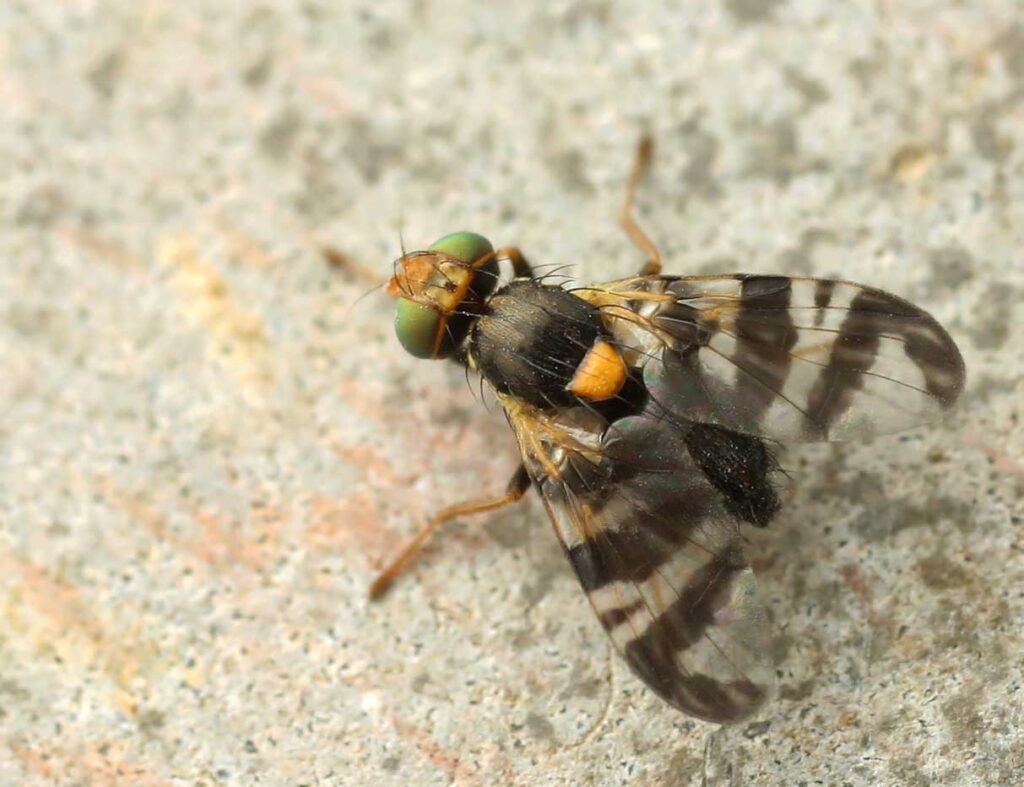Parasitoids of Drosophila spp. are mainly species that attack the larval or pupal stages. In koinobiont larval parasitoids such as Ganaspis kimorum, the host is not killed immediately but only after pupation.
This creates the possibility that already-parasitized pupae can be attacked by pupal parasitoids, leading to cases of multiparasitism or, in some situations, hyperparasitism. Ganaspis kimorum, recently introduced into Europe and the United States within classical biological control programs against Drosophila suzukii, is a highly specific and effective insect in its native range.
However, in new introduction environments it may interact with resident pupal parasitoids such as Pachycrepoideus vindemiae and Trichopria drosophilae, which may influence its effectiveness.
Interactions among parasitoids
A recent study evaluated the interactions between these pupal parasitoids and G. kimorum, using both D. suzukii and D. melanogaster pupae as hosts (the latter parasitized by Leptopilina heterotoma).
The aim was to determine the ability of pupal parasitoids to parasitize already-attacked hosts, their developmental success, possible host preferences, and competitive mechanisms.
In no-choice tests, both pupal parasitoids oviposited in healthy hosts as well as in parasitized ones. However, only P. vindemiae was able to complete development on multiparasitized pupae, with a lower success rate compared to healthy hosts and with a reduction in the proportion of females in the offspring.
T. drosophilae, on the other hand, was never able to complete development in the presence of mature larval parasitoids, successfully emerging only from unparasitized hosts.
Observations and developmental outcomes
In choice tests, both parasitoids showed a preference for healthy pupae. Moreover, the proportion of females in the progeny did not show significant variation under these conditions.
Stereomicroscopic observations provided further insight into the mechanisms of interaction. In the case of P. vindemiae, after oviposition in pupae containing third-instar larvae of G. kimorum, the pupal parasitoid larva initially fed on the D. suzukii pupa and, after 8–10 days, also consumed the larva of G. kimorum.
This behavior indicates a form of physiological suppression or intrinsic competition, systematically preventing the emergence of G. kimorum from multiparasitized hosts.
In contrast, when T. drosophilae was placed in contact with the same hosts, G. kimorum successfully completed its development, thereby preventing the survival of the pupal parasitoid.
Implications for biological control
These results indicate that while P. vindemiae prefers healthy hosts, it has the capacity to compromise the development of G. kimorum, thus reducing its potential as a biological control agent.
By contrast, T. drosophilae appears to have a much more limited impact, restricted to non-reproductive effects caused by the developmental failure of both species.
Therefore, the simultaneous integration of larval and pupal parasitoids could reduce the effectiveness of D. suzukii control, especially in the presence of highly competitive pupal species such as P. vindemiae.
Careful planning is thus required: T. drosophilae could be used in targeted early-season interventions to reduce overwintering populations, while the use of P. vindemiae should be limited or avoided in contexts where G. kimorum is establishing.
Conclusions and recommendations
In conclusion, an in-depth understanding of interspecific interactions among biological control agents is essential to prevent competitive conflicts and to ensure the long-term stability of biological control programs.
Source: Lisi, F., Rogers, D. V., Henry, E. E., Hogg, B. N., Biondi, A., Wang, X., & Daane, K. M. (2025). Potential interactions of larval and pupal drosophila parasitoids and their implications for biological control of Drosophila suzukii. Biological Control, 204, 105756. https://doi.org/10.1016/j.biocontrol.2025.105756
Image source: EPPO
Andrea Giovannini
University of Bologna (ITA)
Italian Berry - All rights reserved












